The Disruptive CEO’s Toolbox
What makes disruptive Startups successful? We outline the lean Startup and customer focused marketing tools and frameworks each CEO should know.
In order to realize corporate goals and objectives, business leaders must comprehend the paramount importance of the customer-oriented approach. This involves the use of sophisticated methodologies, such as customer-centric marketing, service design, lean startup and agile development.
Customer-Focused Marketing
Businesses are expanding their market shares by adopting the customer-centric approach. In the 2017 State of Marketing Report by Salesforce Research, over two-third of marketing leaders considered positive customer experience to be the main driving force of business success. Therefore, it is more imperative than ever to understand customer requirements.
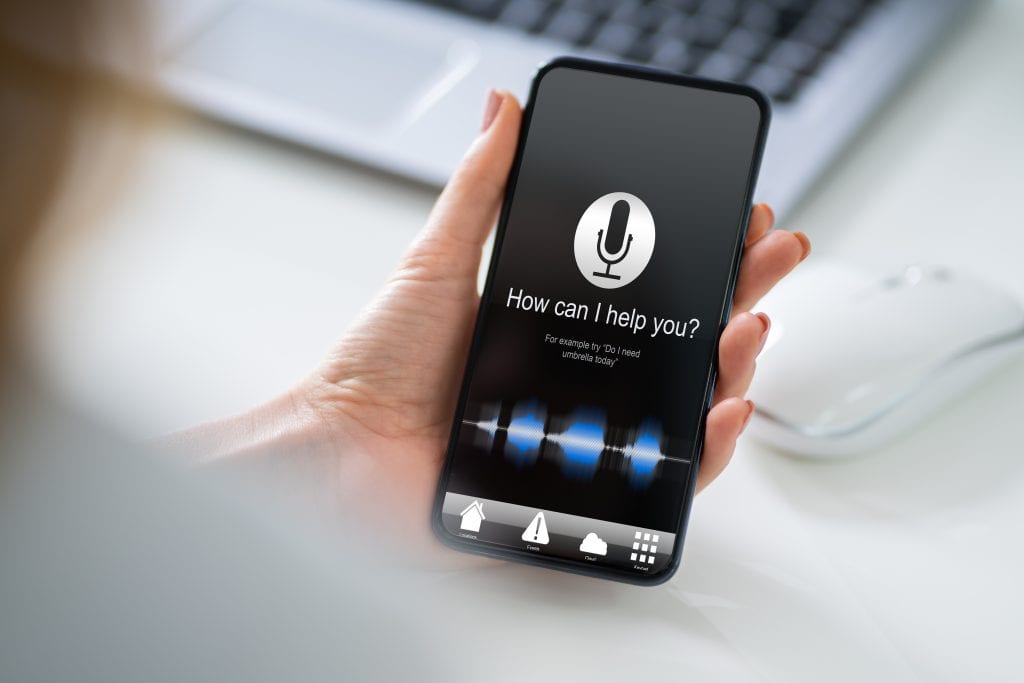
In their 2019 Customer Centricity paper, DELOITTE AND TOUCHE noted that customer-centric organizations have a 60% higher profitability as compared to other businesses. They outline how marketers must fine-tune their content strategies according to customer criteria in order to fulfill business objectives. This is the basic premise of customer-focused marketing.
Whether it is writing business plans or designing workflow processes, it is all too easy for a business to get preoccupied with its internal workings and lose sight of a customer’s perspective.
With a customer-centric marketing approach, the emphasis is on customer viewpoint; hence unfulfilled customer needs are more easily identified. The business can then channel its financial and human resources towards fulfilling these unmet needs and exceed customer expectations. This will lead to increased value addition and greater client satisfaction.
Service Design
Service Design, as outlined in one of the first papers on the subject by G. Lynn Shostack in the January 1984 issue of Harvard Business Review, is a crucial part of a company’s customer-driven strategy. An organization must align, design and optimize its endeavors to fulfill customer criteria and to facilitate the user journey. This approach also aims to enhance employee experience so that they deliver better performance.
Service design can provide the impetus for business growth. It allows businesses to formulate innovative solutions to solve complex problems. Service design thinking transforms collaboration between project team members and allows them to attain greater productivity.

It provides greater insights into the mind of the customer. The business can perceive the customers’ needs more easily and incorporate them during service delivery. Customer experience becomes an organization’s wide responsibility with service design. This gives the service provider a deeper understanding of customer issues as well as business opportunities.
Since the focus is on delivering value to the customer at the onset of development, errors are noticed early. This reduces the detrimental effects of errors, which can otherwise be prohibitive for various dimensions, including budget, timeline and resources.
Lean Startup
In a May 2010 article, the Wall Street Journal introduces Lean Startup as a scientific approach to launching and managing startups and nascent project organizations. It facilitates and accelerates their development allowing them to quickly become capable of delivering customer-oriented products. This methodology aims at expediting startup expansion and brings stability to nascent enterprises. It involves a rigorous and analytical approach to product development.
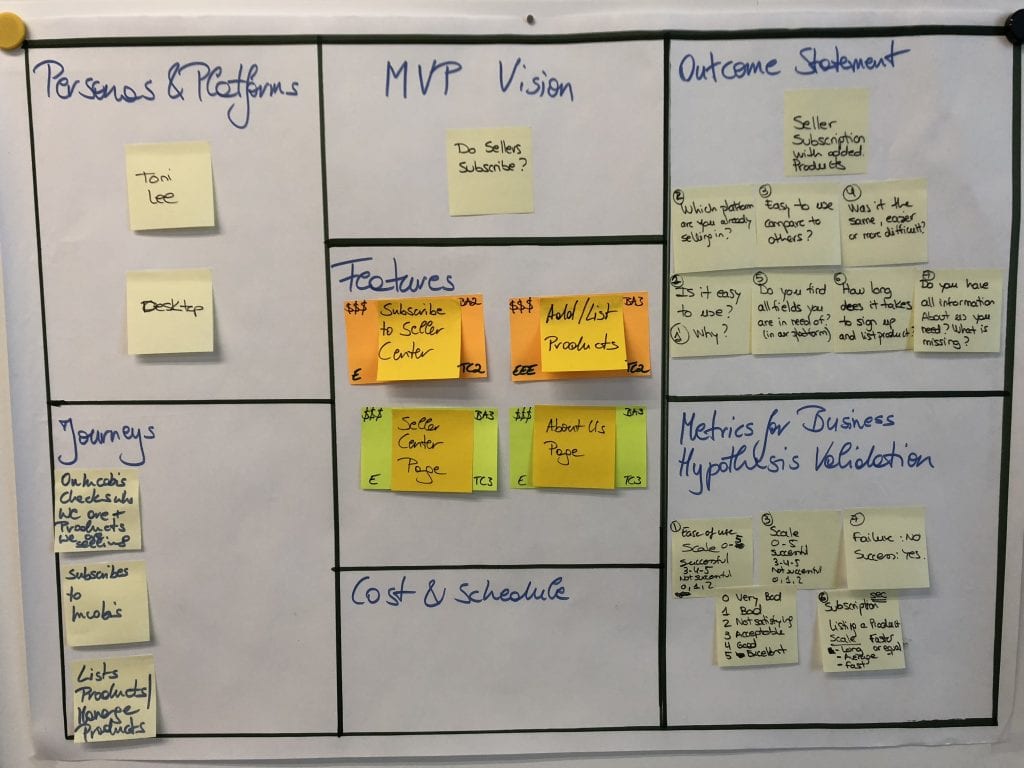
The prime advantages of the lean startup method include an accurate assessment of business model viability, religious prioritization by business value and shortening of the product development process.
The lean startup technique is in stark contrast to the approach employed by most startups. Many startup founders typically develop a new product or service hoping that it would generate high demand. They are often disappointed to discover that the reality is contrary to their hopes. Why? Because there is no product-market fit. But by the time they sense an impending failure, vast quantities of resources have already been squandered. Consequently, startups suffer tremendous losses and over 90% of startups fail.
The common approach is, therefore, extremely risky and unfeasible. Investing large amounts of resources on the basis of wishful surmise and conjecture can hardly be deemed judicious. That is why lean startup is a leaner, superior alternative, which looks at reducing risks and at maximizing opportunities through early market testing of a minimum viable product (MVP).

The lean startup method enables both entrepreneurs and business managers to gauge consumer demand for the new product or service at a very early stage. It provides insights as to how the product must be refined to fulfill consumer requirements. This procedure is known as validated learning. Therefore, it alleviates risks and curtails losses. It minimizes the number of resources that are being diverted to nonproductive initiatives and features.
Lean startup attenuates the detrimental impact of failed ideas.
Agile Development and Scrum
Agile development using scrum brings several benefits to innovation projects. Scrum allows new features to be developed in increments called sprints. The new feature is developed within a relatively short time period, between 1-4 weeks.
Throughout the development cycle, sprints should have consistent timeframes. As soon as one sprint is complete, the next one is commenced. The sprint team, which consists of experts with the required skills for the tasks in the sprint, completes user stories and respective tasks for the sprint review, which takes place at the end of the sprint. During the sprint review, all completed work is shown to the rest of the team and any open points discussed.
This shortens development time and allows the product to be launched earlier. Early launch leads to earlier market introduction, feedback and revenues.
Comprehensive testing is carried out during each sprint, as soon as work is completed by the sprint team and moved to status “Quality Assurance”. This is where testers start their tests by comparing the delivered product increment with the acceptance criteria in the original user story. This regular inspections and quality assurance is carried out for the product during each sprint of its development.
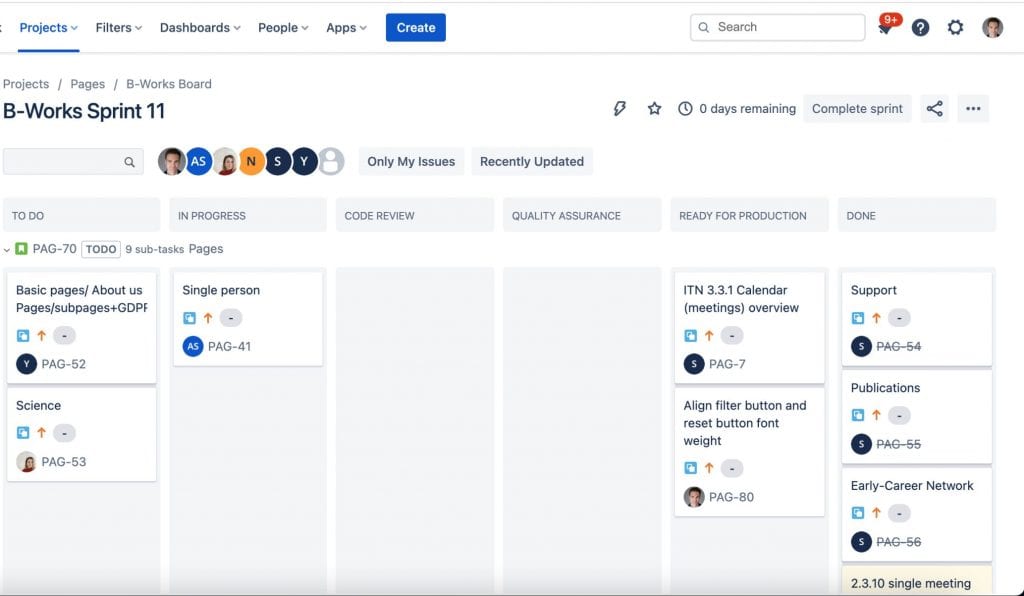
Quality issues and bugs, if any, are identified early on and the necessary adjustments are made on an ongoing basis to address them. This is quite different as compared to the waterfall approach.
The waterfall paradigm is a classic approach to product development. Various aspects of the project are subdivided into sequential phases. Each phase requires deliverables generated by the previous phase. It is, therefore, a highly linear approach. This is one of the oldest software and project development methodologies. The traditional waterfall technique is characterized by low flexibility, bound to a critical time path, and therefore little time for iteration and short feedback cycles.
Success Rate Comparison: Agile is Superior to Waterfall
Software projects developed with the traditional waterfall technique have an 18 percent failure rate and a 49 percent success rate. About 33 percent of projects face serious challenges and major issues. These RESULTS were presented by the Standish Group, which specializes in conducting IT project surveys.
By comparison, agile development features a success rate of 64%, and a failure rate of only 8%, which is more than 50% less than for the waterfall technique. If we combine Agile with an iterative and lean approach, we reach success rates of over 70%.

It is evident that the waterfall approach entails a considerably low success rate. A more pragmatic approach is required due to its drawbacks. This is why agile development compared with a resource conscious lean approach is seen as a superior alternative. This is reflected in superior product quality, stakeholder value, ROI and on-target schedule.
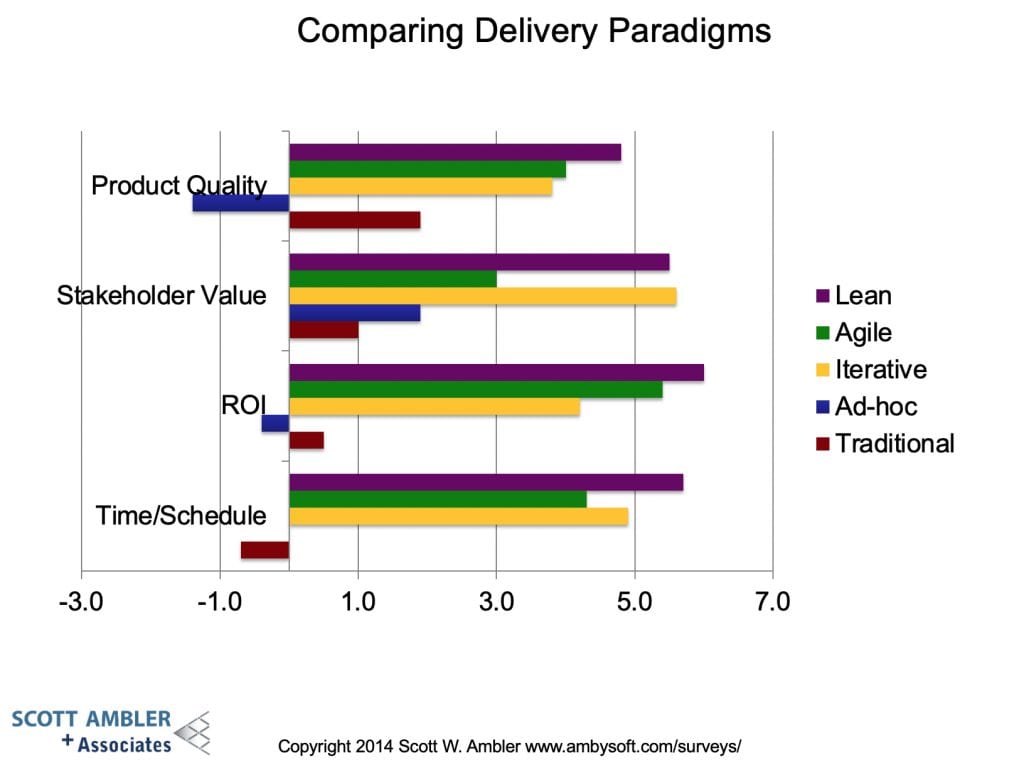
The B-works Customer Focused Approach combines Lean Startup with Agile and Design Thinking
Corporations and business leaders face an increasingly competitive economic environment, while being challenged to keep their business competitive in the Digital Transformation. They must mitigate risks, drive innovations and stay competitive while adhering to their budget.
Hence, they need efficient product development methodologies to remain within their budget and shorten the development cycle. Faster development reduces costs and increases earning opportunities.
At B-works, we leverage customer-focused marketing, service design, lean startup and agile methodologies to realize these goals.
We initiate the development cycle with the conception and discovery phase. We identify the company’s vision, objectives, the positioning statement and business value of required features. We also identify customer personas, which help us in understanding and deriving the business value of product features as well as the positioning statement.
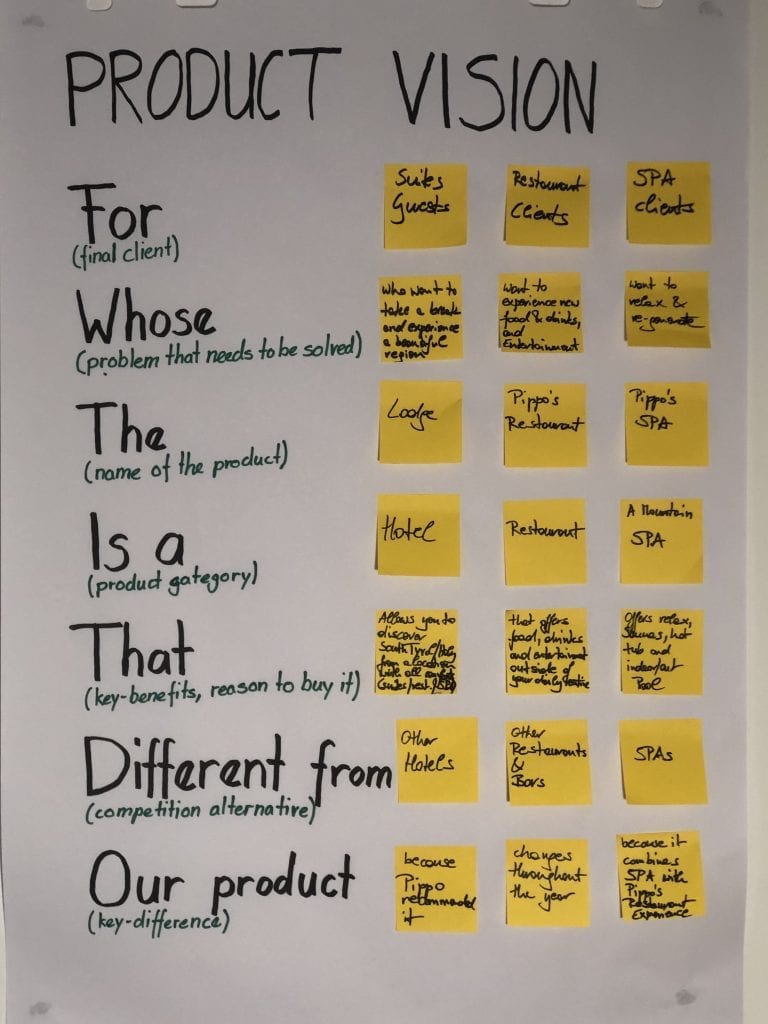
We then estimate the development effort in terms of the total hours required to create product features. This is the time required by an expert (such as marketing professional, UX expert, designer, software engineer, etc.) to complete the task. The estimate is based on empirical data, which we collect from previous projects involving identical or similar tasks.
In the next phase, the client decides which features must be included in the Minimum Viable Product. Those features are included in an MVP so that maximum validated learning is gained with minimal effort and cost. These features are prioritized according to their business value. The number and types of features determine the total hours required by the expert for development. The hourly rate for the expert and the total required hours help determine the budget.

As long as the features do not change, we can assure clients that the project costs will not exceed the budget. However, features can change during development owing to different factors. The client may require the addition of certain features after discovering their high business value. Conversely, the client may want certain features to be deleted after finding that their business value is not justified. Due to the flexibility of Scrum, we can add or exclude features without appreciably changing the budget. This is possible when the new estimate of required development hours does not exceed the previous estimate.
One of the benefits of Scrum is that feedback is relayed quickly between the client, product owner and development team. Sprint planning, sprint reviews and retrospectives ensure full participation of all team members. Risks are also identified at the very outset. Only relevant features with high business values are consequently included.
Provide only relevant, value adding work
Our approach towards project development is to provide only relevant value-adding work with a superior unique selling proposition.
Scrum, lean startup and customer-focused marketing ensure efficient use of a client’s budget as only those features with the maximum business value are developed. Our aim is to launch an MVP as soon as possible in order to test its features in the market. Timely market entry allows us to quickly obtain crucial data for assessing KPI success and to realize early revenue. Analysis of market performance data permits us to carry out iterations in order to enhance the product. The early market entry also minimizes the risk of exceeding the budget in case the MVP performance is unsatisfactory.
